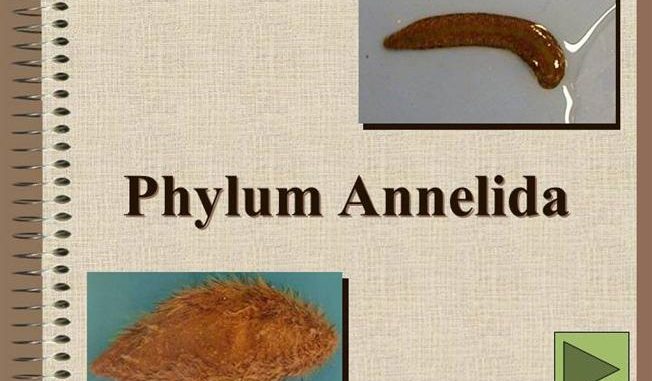
General characteristics of Phylum Annelida
- (Annelus: little ring)
- Kingdom: Animalia
- Habitat: mostly aquatic, some are terrestrial
- Habit: free living
- Symmetry: bilateral symmetry
- Coelom: coelomate (Body cavity is a true coelom, often divided by internal septa)
- Body is metamerically segmented
- Grade of organization: organ system grade
- Germ layer: triploblastic
- Body possesses 3 separate sections, a prosomium, a trunk and a pygidium.
- Digestive system: complete and developed
- Respiration: by general body surface
- Nervous system: nervous system with an anterior nerve ring, ganglia and a ventral nerve chord.
- Circulatory system: Has a true closed circulatory system.
- Excretion: by nephridia
- Reproduction: Sexual and gonochoristic or hermaphoditic.
- Fertilization: Internal or external
- Development: direct with no larval stages
Classification of Phylum Annelida
Phylum Annelida is divided into four main classes, primarly on the basis of setae, parapodia, metameres and other morphological features.
Class 1 Polychaeta
(Polys: many; chaite:hair)
- Habitat: They are marine, terrestrial, and freshwater.
- Archetypical protosome development (schizocoely).
- True coelomates (schizocoelomates).
- Bilaterally symmetry, segmented worms.
- Complete digestive system.
- Closed circulatory system.
- Well-developed nervous system.
- Excretory system: Both metanephridia and protonephridia.
- Lateral epidermal setae with each segment.
- Dioecious or hermaphroditic.
- Fertilization: external
- Examples: Nereis (sandworm), Syllis, Sabella
Class 2 Oligochaeta
(Oligos: few, chaite: hair)
- Habitat: mostly terrestrial and few are freshwater
- Body metamerically segmented
- Clitellum present
- Hermaphrodite but cross fertilization occur
- Fertilization: external
- Cocoon formation occur
- Examples: Pheretima posthuma (Earthworm), Lumbricus, Stlaria, Tubifex
Class 3 Hiradinea
(Hirudo: leech)
- Habitat: primarily freshwater annelids but some are marine, terrestrial and parasitic
- The body has definite number or segments.
- The tentacles, parapodia and setae are totally absent.
- They are hermaphrodite.
- Fertilization: internal and a larval stage is absent.
- Examples: .Hirudinaria (Leech)
Class 4 Archiannelida
(Arch; first)
- Habitat: They are strictly marine.
- The body is long and worm like.
- The setae and parapodia normally absent.
- They may be unisexual or hermaphrodite.
- The development: indirect forming trochophore larva.
- Examples: .Protodrillus. Dinophilus, Protodrilus
